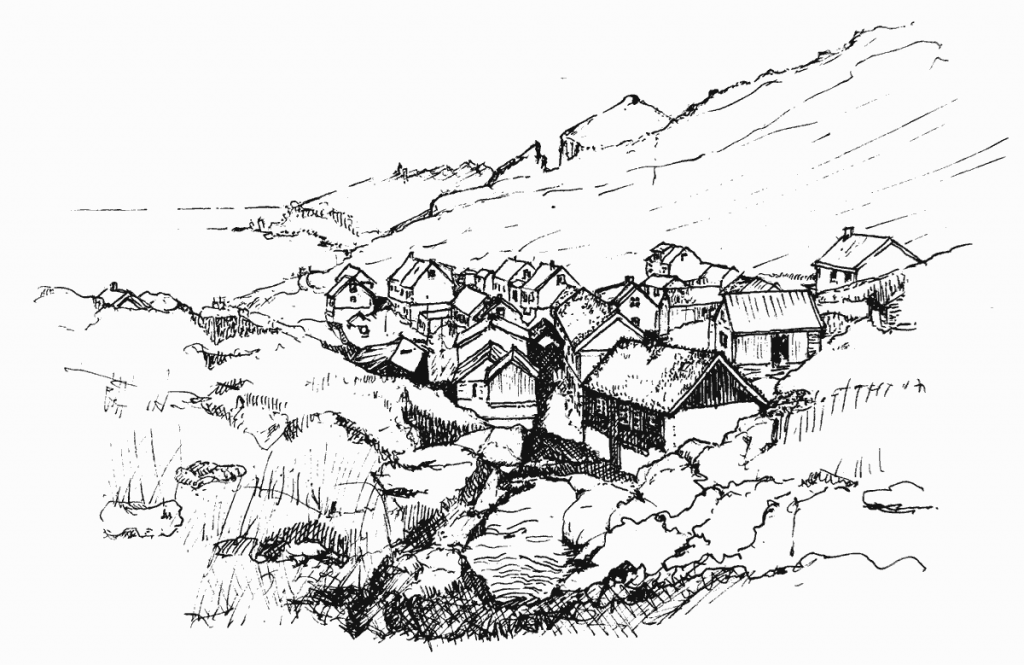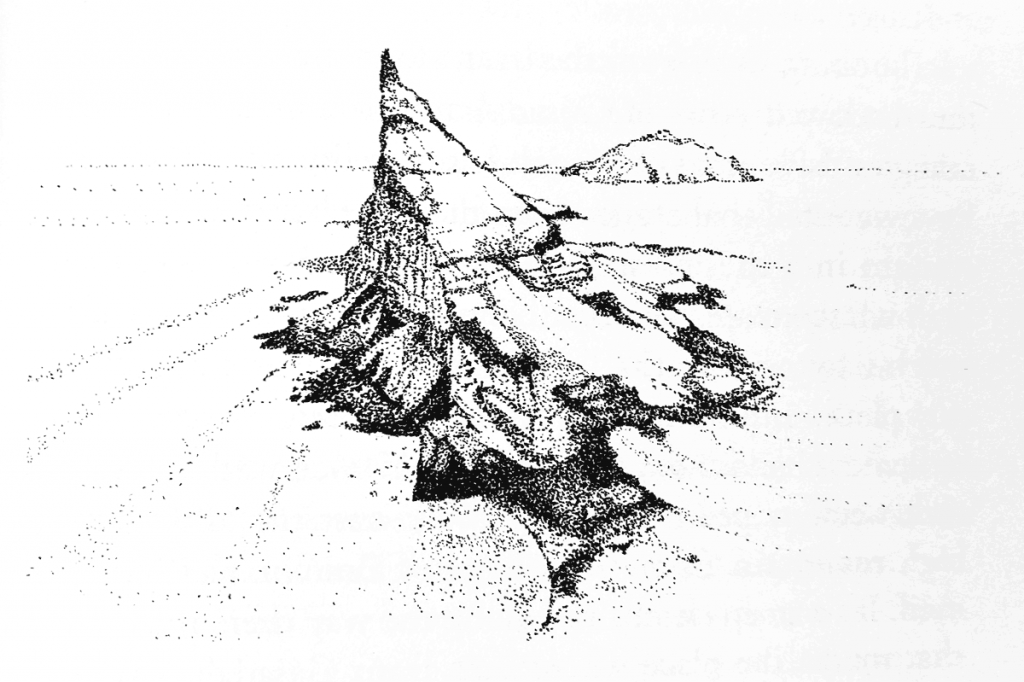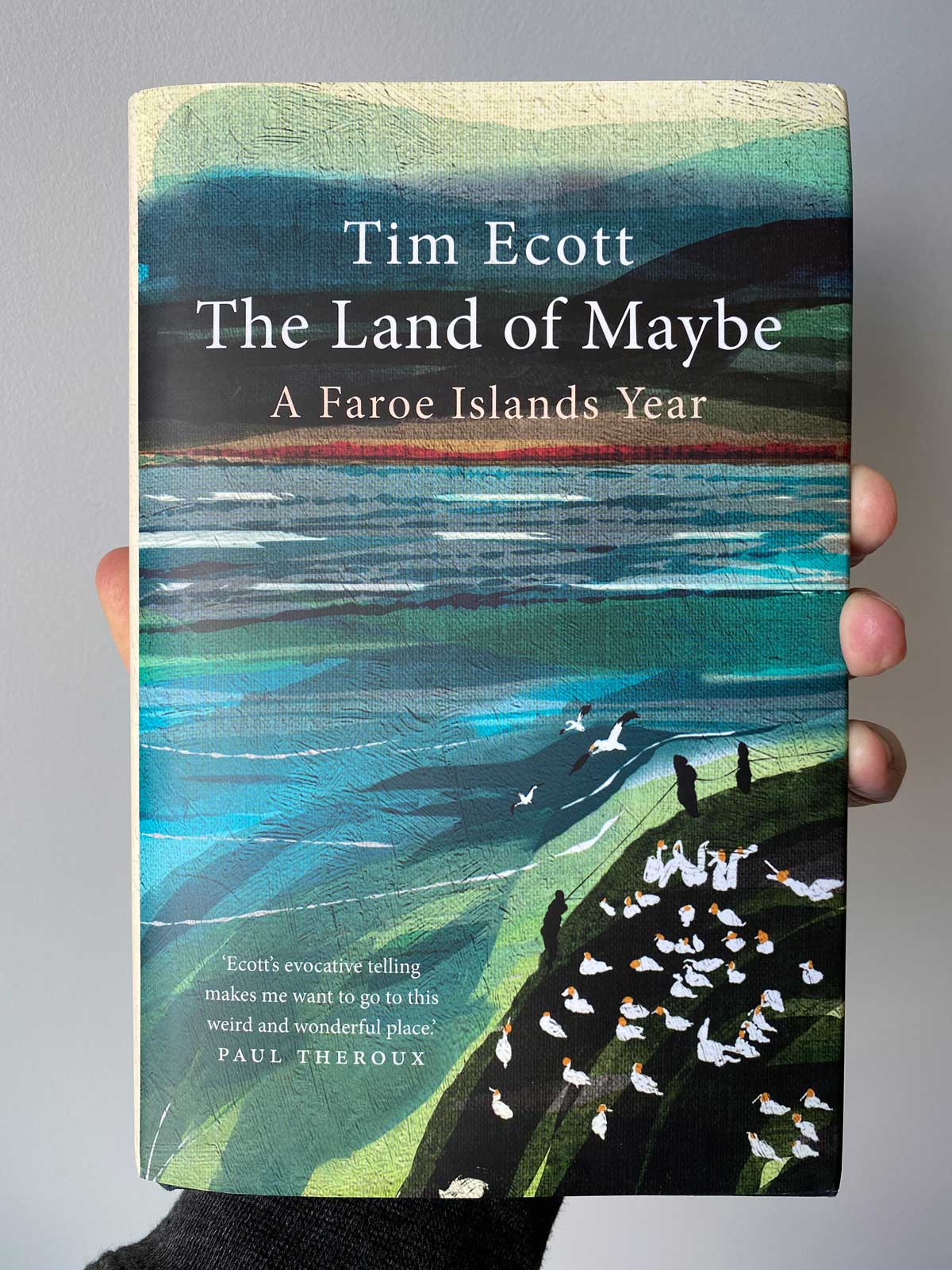I didn’t go outside much during the last two weeks, and I’m guessing that neither did you. COVID-19 is ravaging the world, and we’re only just beginning the strange solidarity of fighting it together, by staying apart. In the best of times modern life can be racked with anxiety, so in the midst of a deadly pandemic, and accompanying economic collapse, how do we stay sane?. We need a Happy Place: somewhere that makes us feel calmer just by thinking about it. That place for me is the Faroe Islands, and while the country is asking people to avoid visiting right now, I found the next best thing by staying inside and devouring The Land of Maybe: A Faroe Islands Year by Tim Ecott.
This newly released book isn’t structured around any particular year, but on the seasonal cycle, the rituals and traditions of Faroese life that the author has experienced over his decade of trips to the Islands. It’s not a travelog, although it includes detailed stories of his time staying with locals, on islands such as Stóra Dímun and Mykines. It’s not a history book, but nearly every chapter includes well researched context from centuries-old stories, both factual and fabled. It’s not a nature book, and yet animals are the central characters. More than anything, the The Land of Maybe strikes a balance between conveying information and feeling, mixing journalistic detail with direct participation in visceral activities such as bird hunting and sheep slaughtering. Ecott’s writing conveys cultural traditions without sugar coating or romanticizing them. What comes through the strongest is his respect for the Faroe Islands, and the people who have invited him into their lives. You get the sense that this is his Happy Place too.
As a person who reads a lot about the Faroe Islands, it was fun to recognize familiar points of reference (skerpikjøt!), while also learning stories that were new to me (telling time using compass directions?). If this book was your introduction to the Faroes, I imagine it would prompt many hours on Wikipedia and Google Images, going down rabbit holes to learn more and see for yourself. Following along on a map is one of joys of a book like this, and the author takes us to many of the less populated islands, including Mykines, Stóra Dímun, Skuvoy, Nolsoy, Sandoy, Hestur, and Koltur. There’s less of a focus on the northern isles, with the exception of a reluctant trip to Viðoy to witness a grind (whale hunt) near the village of Hvannasund.

The stories in the book emphasize how the Faroese have traditionally lived close to nature, positioning humans quite directly in the food chain. That means killing and preparing animals to eat, and Ecott doesn’t shy away from the more squeamish parts of traditional Faroese food culture. He personally kills a gannet in a nighttime hunt on the cliffs of Mykines, describes in detail the slaughter of a ram he helped herd from the outfields, and is tasked with carrying bundles of dead hares during a hunt on Vágar. As is almost necessary in a book like this, he also describes in detail a pilot whale hunt, acknowledging arguments for its sustainability while also nodding to health concerns and his own misgivings. I noticed that the “Selected Readings” list at the end of the book includes Pilot Whaling in the Faroe Islands by Jóan Pauli Joensen, which may well be the definitive text on this tradition that dates back over 1000 years. I’m thankful for this list of additional references, for those of us who want to dig deeper.
Most of the chapters center around one of the 18 islands, with associated traditions such as fowling, farming, or shepherding. But in-between, the book is punctuated by ten interludes in which the author returns to a gorge on the eastern coast of Vágar. There are raven’s nests there, and while he has many encounters with puffins, fulmars, and gannets it’s the ravens that seem to strike a chord. This story-in-a-story is in some ways the most personal part of the book, letting the reader in on a private discovery, a magical corner within an already stunning Happy Place. These mini-chapters remind me of how nature contains wonder at all scales, and that if you stop, and sit, and listen you’ll find that any that patch of woods or field contains its own world. It can feel like a discovery, something private and unique, a new ways of seeing what was there all along.
“I saw ravens as a boy in Ireland, high up in the Mountains of Mourne, and I watched them play in the wind. There were sheep there too, and just like the Faroes, the heights were bare treeless slopes that up close revealed myriad tiny specs of color; lilac harebells, eyebright and saxifrage that lit up the seemingly empty green land. The mountains lay right behind the small house where my grandparents lived, and they are my first and strongest memories of the outdoors.”
Excerpt from The Land of Maybe: A Faroe Islands Year
Tim Ecott grew up in Ireland and mentions in the book that ancient traditions in the Faroe Islands “have much in common with the way people in Ireland or the Outer Hebrides lived three or four generations” ago. Subsisting on seabirds, on islands such as Mykines, has parallels to how people were able to survive on St. Kilda. Obviously the country has changed, and people can choose to rely less on traditional ways. But there’s a deep respect, and even resurgence of tradition in the Faroes. It’s a beautiful place, with a unique culture, where history seems to sit just below the surface of modernity.

I was excited to read The Land of Maybe ever since I first saw the beautiful cover illustration online. It’s packed with both information and inspiration; clearly a labor of love. Given the amount of research Ecott has done, and the experiences he’s had, I came away feeling like he probably has more stories to tell about the Faroe Islands. This book doesn’t feel like a conclusion of his relationship to the place, more like a reciprocating gift for all that it’s given him.
The Land of Maybe was published by Short Books in the UK and is available on Amazon (US, UK) as well as independent bookstores everywhere. The inside illustrations are by Jessica Ecott, and the dust jacket was designed by Two Associates. You can follow Tim Ecott on Instagram or his website.
